Regular readers of this infrequent blog will know that central to the culture of the NOVA Lab class is the belief, by now a cliché in educational literature (though not in enough classrooms), that failure is not to be feared but rather should be seen as an opportunity, a chance to understand what didn’t work in one’s approach to learning about and doing things of purpose in the world. For most of the first three years of this class I have struggled to capture with accuracy and agility the learning my students have acquired in their self-determined, project-driven work.
I initially tried regular blogged reflections, but they were too tedious and time consuming, especially when done well. And though they did meet the “Tech Credit” criteria attached to our class, those blogs garnered little traction in the real world. I’ve also used biweekly scrum meetings where students presented the progress and pitfalls of their work over the past two weeks. Again, this was useful, but repetitive and the students were, more often than not, placed in the unenviable position of confronting ego-defensiveness when their progress was lacking but they had to present in front of their peers.

So I moved to “A-Teams,” or accountability teams during the pandemic and our online work. Each week, on a Monday, before moving into their independent or team work, students met in Zoom breakout rooms of rotating “accountability teams” to discuss their progress and plans for the week.
These proved hard to monitor and were, according to the students, tedious at best. My next move? I switched to weekly student 3-2-1 videos (thanks to Don Wettrick for this tip): 3 things they accomplished, 2 things they still need to do/failed at, and 1 thing they will take with them as a learning point. But, even these simple videos provided little insight into student needs and progress…though they were better than most other methods. Nevertheless, getting students to create a library of these videos and store them somewhere that was accessible to me and to the public at large…even if those were on their blogs…often proved more trouble than it was worth for students and me.
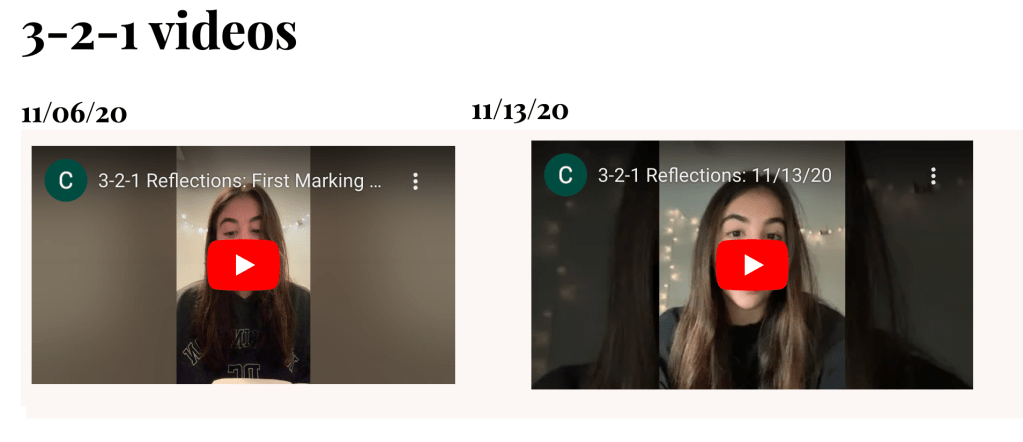
What I realized through all of this is that the majority of my well-intentioned attempts to have students reflect were more about me and justifying the methods of the class rather than helping students learn what they were learning about themselves, which is, so far as I can tell, the ultimate end of such a class…and learning in general. Even my end-of-the-marking-period conference documents, while often beautifully written and thoroughly evidenced, were week-long reconstructions of things done weeks prior, and thus largely a construct of failable memory and wishful thinking…never as authentic or real as they could have been.
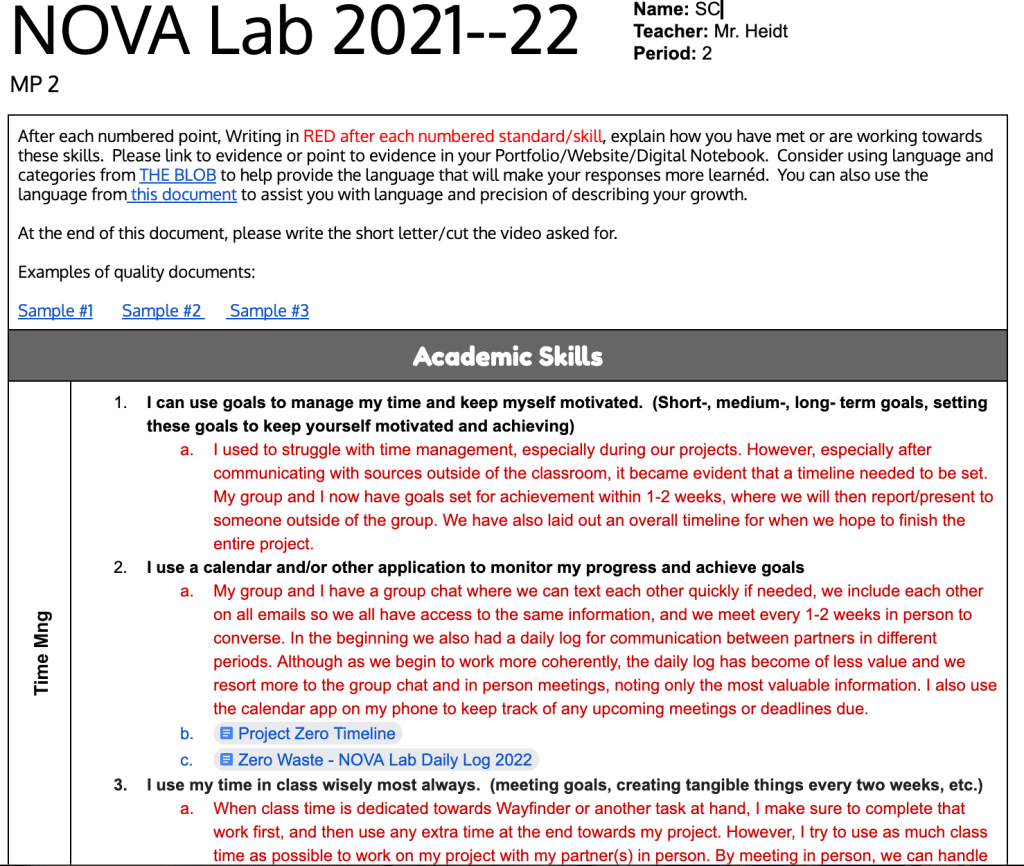
What I needed was something that would provide students with the ability to create a habit of capturing their learning “in the moment,” which added little burden or interruption to the learning process, and which would, at the same time, create a learning artifact of insight and meaning. For it is, after all, the “doing,” the manifestation in the real world of the abstractions of thought and idea, that makes a “dent in the universe.”
My problem was not a new one. Any teacher who has sought to develop classrooms around the type of entrepreneurial, open-source learning powered by innovative thinking has faced the grading conundrum. (I would argue that any teacher of any classroom is faced with a grading conundrum…but that is a topic for another blog, and for others who are far more eloquent and practiced in going gradeless than I am.) The universality of this struggle with grades was part of why I had formed an extensive professional learning network on Twitter and Linkedin. I knew others were working in this area, but it wasn’t until my friend and fellow teacher in the field of entrepreneurial mindsets, Christian Talbot, contacted me on Twitter that I found what I was looking for.
Christian’s documentation of developing entrepreneurially-minded students through both his work at Malvern Prep and in his own “Expeditionaires” project was a north star for me in developing NOVA Lab. So when he asked me if I’d ever heard of an application called “Unrulr“, I had to check it out.

In early May of 2021, via Zoom, I met with Unrulr’s director of Growth, Aaron Schorn. Aaron has led entrepreneurial, experiential learning camps in Hawaii for years; he knows the power and pitfalls of the method. What he told me, in just 30 minutes, about Unrulr, how he had employed it, and what it was capable of…? Well, it blew my mind. On my drive home that evening I used my phone to record a five-minute brainstorm on how Unrulr could not only help me rewrite the most vexing part of my curriculum–tracking student growth and learning–but could reposition that learning where it belonged, back with the students.

What Unrulr does so well is provide students with a seamless and utterly familiar (think Instagram for learning) method for capturing their learning. But the real power in Unrulr is the ability for students to share their learning “moments” to others through the app. Further, they can link those moments together into learning “journeys” that track a narrative across time to show growth deeper than just content knowledge. What’s more, users can export their learning to unique URLs so they can import them into all manners of online environments.
While we are currently novices with Unrulr, I know enough from 30 years in the classroom to know this: When students are deeply engaged in experiences that stretch them into new areas of themselves, and when they have the means to pause at waypoints along the path those experiences trace, and connect their experience to meaningful learning points (see Unrulr’s brilliant creation of “COGS“) they will feel themselves growing, and in doing so, will tell the story of their growth in ways that are authentic, insightful, and, as they are now fond of saying, “Real.” Such assessment of this type of learning is far more useful to me and to them than using a test, a blog post, or even a marking-period conference could be.
Here is a look at some of these learning journeys
Below I’ve linked to several student journeys crafted over the past few months that represent our first attempts at telling our stories of learning in this class. They are beautiful, insightful, useful artifacts of learning that we could not have created without Unrulr.
Below: A journey tracking a student on a design team as they get their first deep experience in moving through a design thinking cycle. Each journey is made up of separate “moments” created on different days. (This post tracks student learning through build.org‘s “Build Design Challenge.” See our reports on this challenge from last year’s class for more information.)
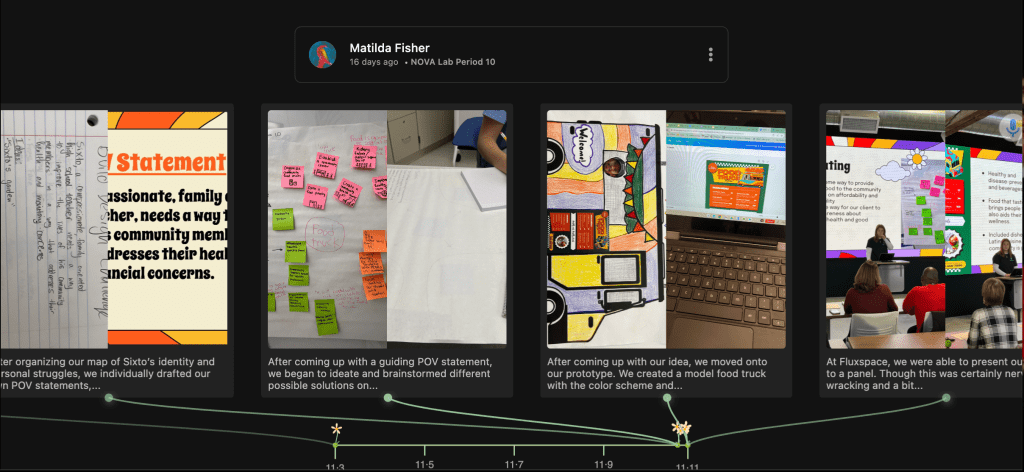
Below–Another journey through the Build.org Design Challenge. Note this student’s reflection on where she could improve her work next time. (see image below.)
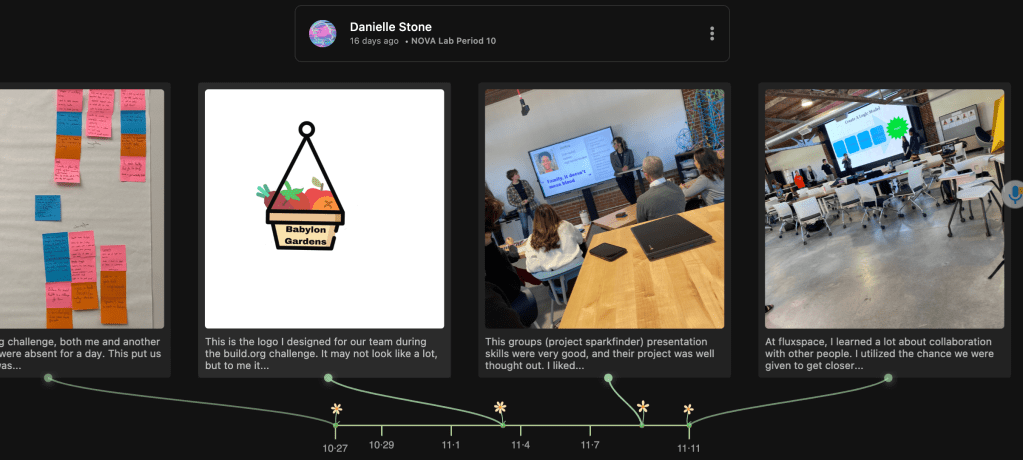
I also link to a few of the initial “moments” that my English students created as their first introduction to my class and to Unrulr. (See below)
Here is where Unrulr does something no other application I’ve encountered can do: It makes student work visible, transparent, and available for others to respond to in ways that are not only manageable and useful for their peers but which, over time, build a loud, joyful, cooperative culture of commenting–a community of creators and learners that celebrate both their successes and their failures with an authenticity that is beautifully brave in its trust in each others’ kindness and capability to provide insight that lifts all learners. (Jesus! That’s a long sentence.)
And what could be more important in a world so recently marked by the terrible isolation of the pandemic than helping our students (re)create communities of learning built upon trust, curiosity, and kindness?
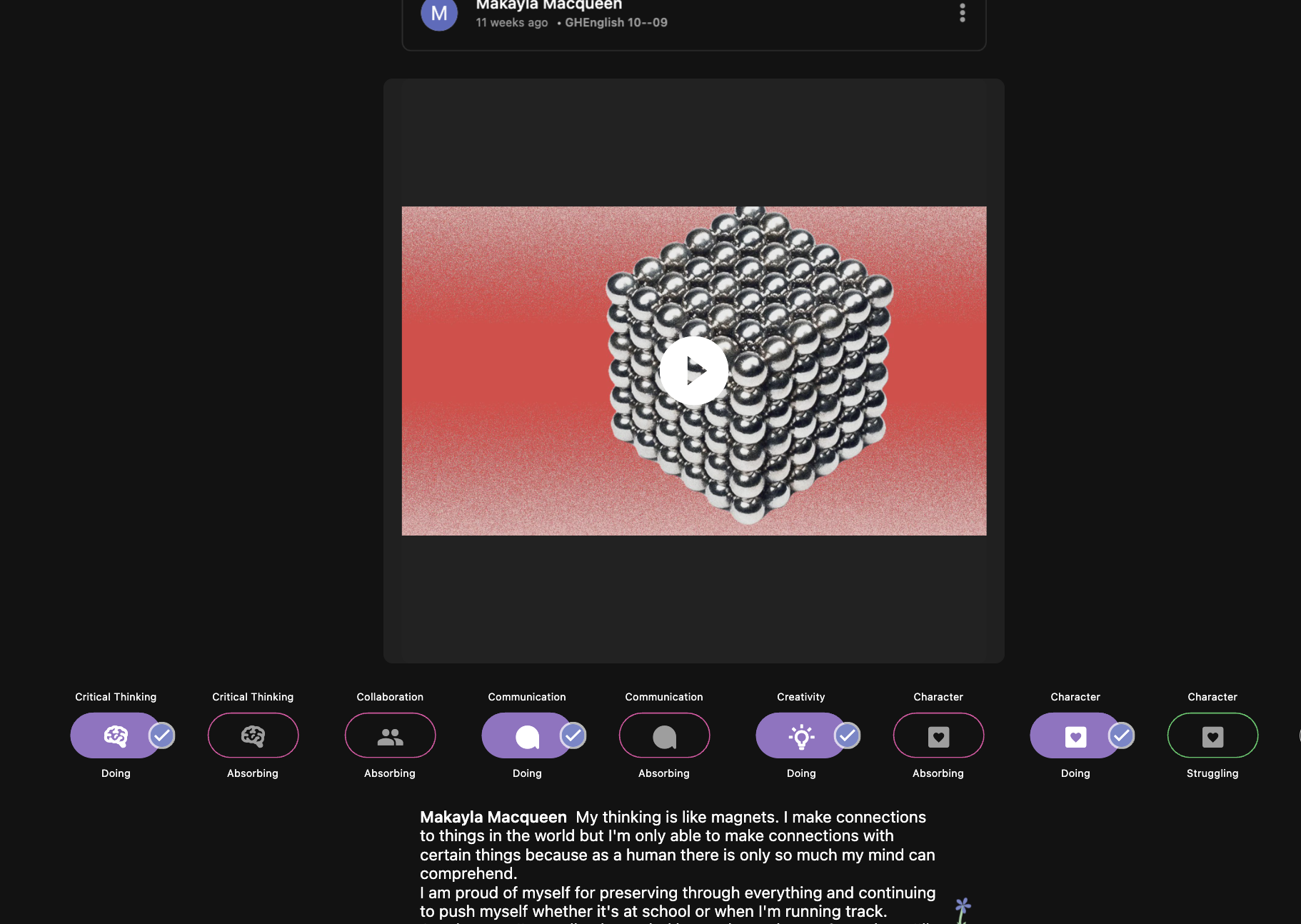

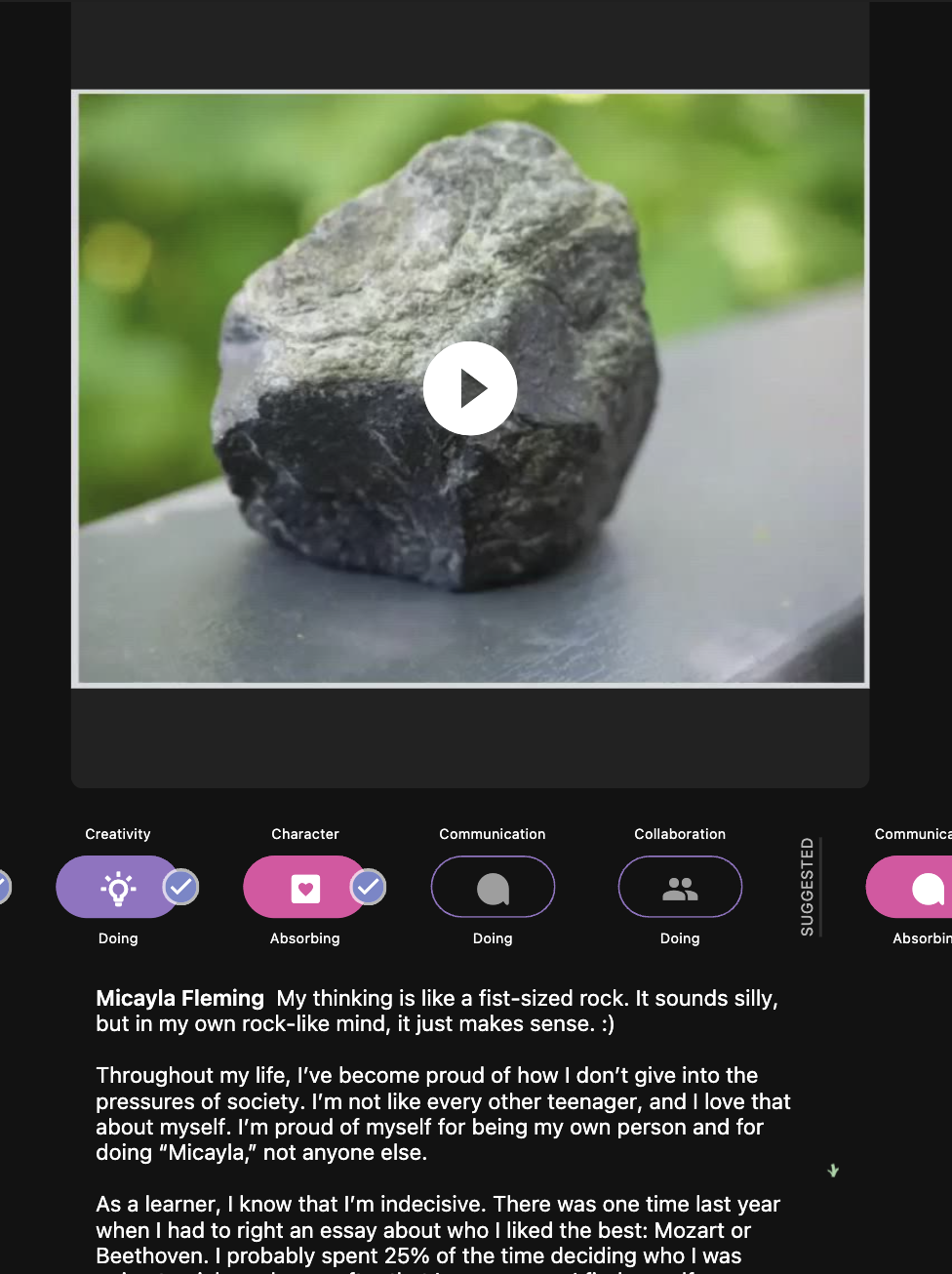
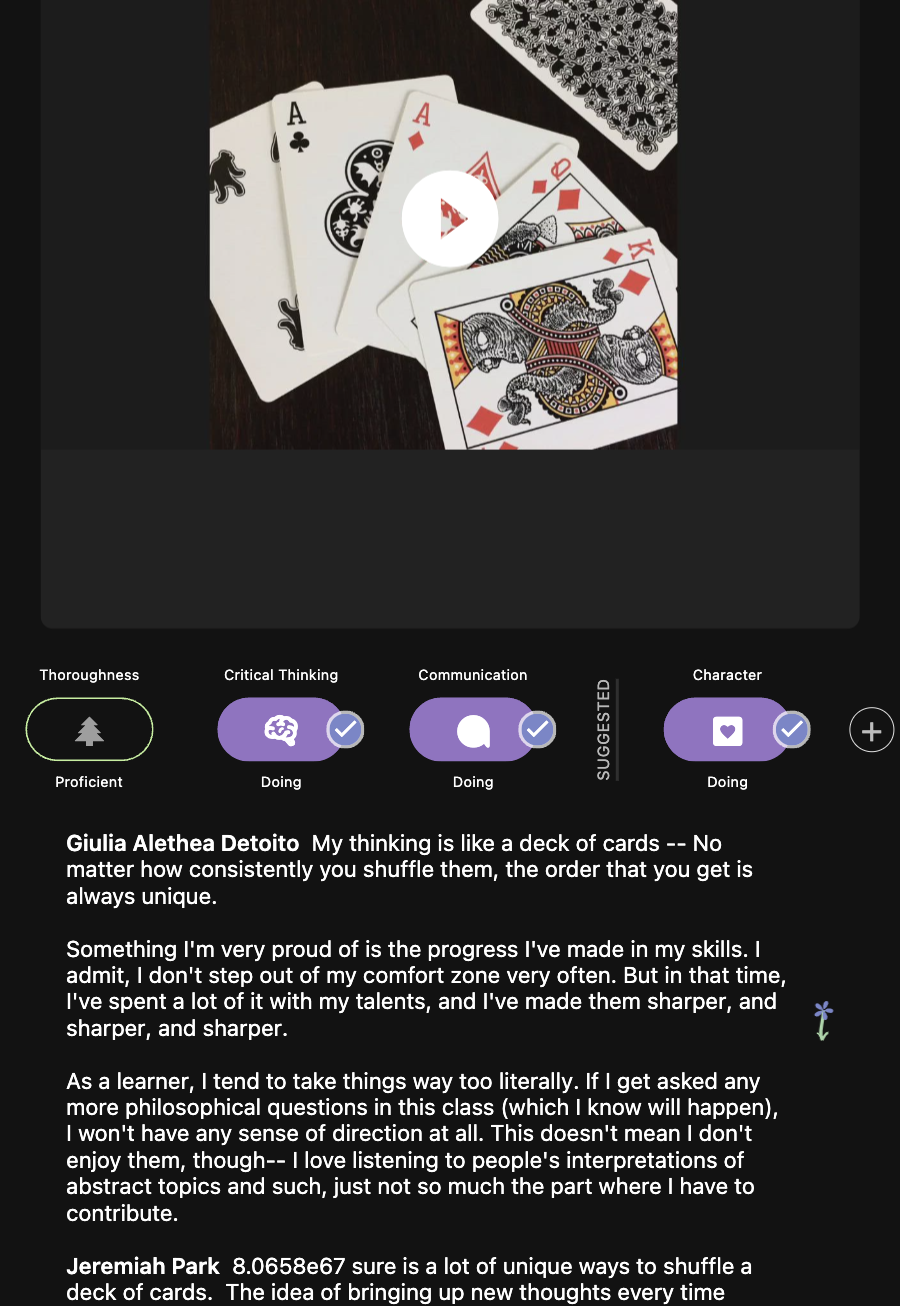
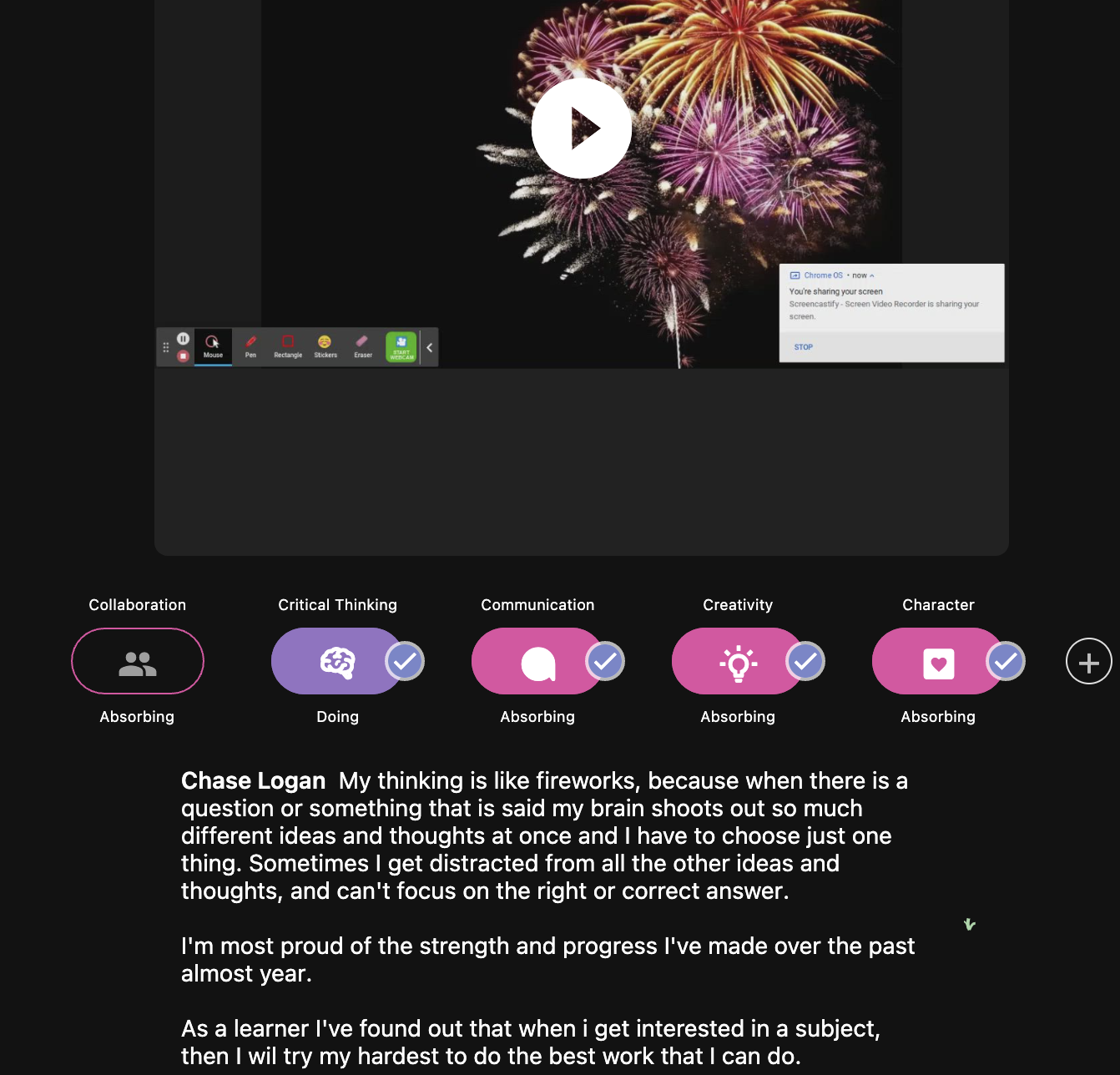

(Links to these Unrulr moments on “How I think” are below, from left to right, 1-4)

9 thoughts on “Measure Less, Learn More: Unrulr and The Celebration of Communities of Learning”